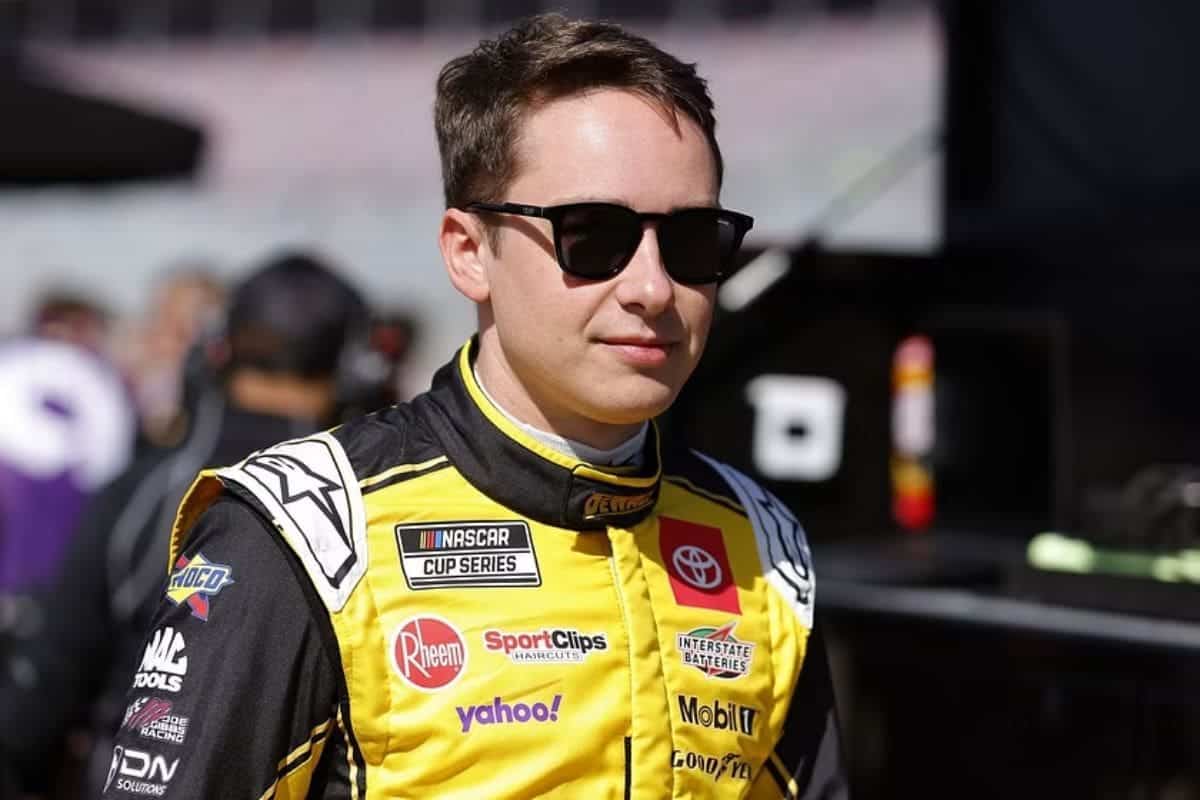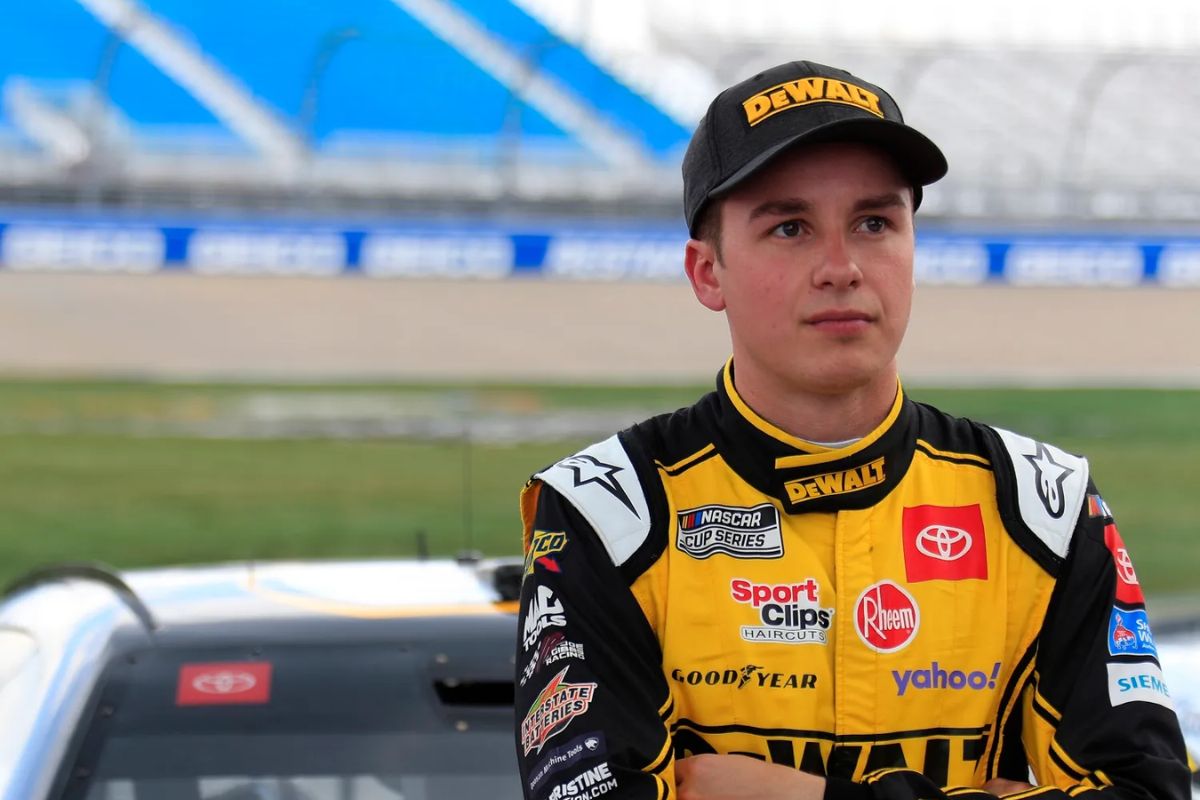Christopher Bell Exposes NASCAR Pit Road Flaw: Christopher Bell’s recent exposé has highlighted a critical flaw within NASCAR’s pit road, drawing attention from the entire racing community. The pit road, essential for refueling and repairs during races, has been pinpointed for recurring issues with penalties and procedural inefficiencies. Bell’s findings underscore the necessity for ongoing refinement of pit road procedures and underscore the integral role of precision and teamwork among pit crews. This insight not only emphasizes the significance of adhering to regulations for pit box entry and speed but also propels the conversation towards potential improvements for safety and race outcomes. Understanding these intricacies offers a deeper appreciation of the challenges and nuances within NASCAR.
Key Takeaways
- Christopher Bell identified a significant flaw in NASCAR’s pit road procedures.
- The flaw’s exposure was unexpected and surprising to the NASCAR community.
- Bell’s discovery could potentially affect race outcomes and strategies.
- The revelation emphasizes the need for procedural enhancements on pit road.
- Ensuring pit road safety and fairness became a heightened concern following Bell’s findings.
Pit Lane Woes Plague Drivers in the 2024 NASCAR Season
The 2024 NASCAR season has highlighted pit lane as a significant hurdle for drivers, with recurring issues ranging from penalties to procedural inefficiencies drawing widespread attention. As the season unfolds, pit lane has emerged not just as a critical area for refueling and repairs but as a crucial zone where races can be won or lost. The spotlight on these challenges has intensified following Shane van Gisbergen’s recent penalty at COTA, underlining the consequences of pit lane missteps and the razor-thin margins defining success and failure in NASCAR’s high-stakes environment.
The complexities of pit lane operations have proven to be a formidable challenge, with drivers and teams alike grappling to optimize their strategies within the confines of NASCAR’s stringent regulations. This has catalyzed a broader conversation about the role of pit stops in the race dynamics and the need for continual refinement of procedures to mitigate the risk of penalties that can drastically alter the course of a race. Additionally, the emphasis on pit lane performance underscores the importance of precision and teamwork, with each member of the pit crew playing a pivotal role in executing flawless stops.
As the 2024 season progresses, the lessons learned from pit lane woes are likely to influence team strategies and preparations, with an eye toward minimizing errors and maximizing efficiency. The spotlight on these challenges serves as a reminder of the complex interplay of factors that define NASCAR racing, where every second and every decision can have far-reaching implications for the outcome of the race.

Christopher Bell’s Guide to Navigating Pit Road Regulations
In a revealing Instagram video, Christopher Bell explores the nuanced world of NASCAR pit stops, underscoring the critical importance of understanding pit road regulations to avoid costly penalties. Bell meticulously breaks down the intricate framework of rules that govern pit stops, ranging from the precise boundaries of the pit box to the strict enforcement of pit road speed limits. His guide serves as an indispensable resource for drivers, teams, and enthusiasts who aim to master the complexities of NASCAR racing.
“Pit road can be harder than you think. There are tons of rules and regulations. And penalties if you don’t follow those rules.”
Bell’s insights provide a profound understanding of the regulations, emphasizing that knowledge and preparation are key to handling the challenges of pit road successfully. He points out that overlooking even the minor details of these regulations can lead to significant setbacks in a race, highlighting the high stakes involved in every pit stop.
To further engage the audience and elucidate the critical points, a table summarizing key regulations is presented below:
| Aspect | Regulation |
|---|---|
| Pit Box Entry | Complete stop within designated area without overlap |
| Pit Road Speed | Adherence to speed limit; monitored by radar |
| Crew Engagement | Precise timing for engagement; no premature action |
| Equipment Handling | Proper placement and retrieval within designated zone |
This table encapsulates the essence of Bell’s guide, offering a clear and concise reference to the pivotal aspects of pit road regulations. Bell’s dedication to educating the racing community not only highlights his commitment to the sport but also underscores the complexity and depth of NASCAR racing strategy and regulations.
View this post on Instagram
Dale Earnhardt Jr.’s Insightful Solution to Pit Lane Speeding
Building on the foundation laid by Christopher Bell’s exploration of pit road regulations, Dale Earnhardt Jr. offers a nuanced approach to managing pit lane speeds, leveraging the unique dashboard light system in NASCAR vehicles. Earnhardt Jr., a seasoned veteran of the NASCAR circuit, understands the intricacies of the sport’s rules and the absence of traditional speedometers in the cars. His insights offer drivers a strategic advantage in handling pit lane speeds to avoid penalties effectively.
“We don’t have a speedometer, we really don’t have a tachometer anymore. I have lights on the dash and they start green, then they turn yellow. There’s basically four green lights, two yellow lights, two orange lights, and then red lights, and they all kind of light up just like a RPM bar would.”
Earnhardt Jr.’s advice centers on the innovative use of the dashboard light system, a critical tool for drivers given the lack of speedometers in NASCAR vehicles. This system allows drivers to gauge their speed with greater precision, thereby avoiding the costly penalties associated with speeding on pit road. The method not only demonstrates Earnhardt Jr.’s deep understanding of the sport but also his commitment to promoting safer and more efficient driving practices within it.
To add depth, consider the following:
- The reliance on dashboard lights for speed regulation underscores the unique challenges NASCAR drivers face compared to other motorsports.
- Earnhardt Jr.’s solution emphasizes the importance of adaptability and technical acumen in the high-stakes environment of NASCAR racing.
- This approach could inspire further innovations in how drivers and teams manage the complexities of pit road speed management.
Earnhardt Jr.’s solution is a reflection of his experience and deep knowledge of the sport, offering a practical and innovative way for drivers to tackle one of NASCAR’s enduring challenges.
Understanding the Pit Lane Speed Limit System
How does the pit lane speed limit system, as highlighted by Dale Earnhardt Jr., employ dashboard lights to guarantee drivers remain within legal speed boundaries and avoid penalties? This system, integral to NASCAR’s regulation enforcement, uses a series of dashboard lights to communicate with drivers about their current speed relative to the pit lane’s legal limit. This innovative approach aims to mitigate the risk of speeding penalties, which can be detrimental to a driver’s position and overall race strategy.
The dashboard lights serve as an immediate visual feedback mechanism. When entering the pit lane, drivers are alerted to their speed status: green lights indicate a safe speed, yellow signals caution or a near-limit speed, and red lights denote exceeding the speed limit. This real-time feedback allows drivers to adjust their speed accordingly to avoid the costly penalties associated with pit lane speeding violations.
Here is a breakdown of the dashboard light indicators:
| Light Color | Speed Status | Action Required |
|---|---|---|
| Green | Within Limit | Maintain Speed |
| Yellow | Approaching Limit | Prepare to Decelerate |
| Red | Exceeding Limit | Decelerate Immediately |
This table succinctly summarizes the operational logic behind the pit lane speed limit system’s use of dashboard lights.
Can Newcomers Master Pit Lane Speed Control?
Mastering pit lane speed control, with its reliance on dashboard light indicators, poses a significant challenge for newcomers to NASCAR. This challenge is evidenced by Shane van Gisbergen’s experiences and Dale Earnhardt Jr.’s mentorship. The intricacies of maneuvering the pit road are guided by a system of dashboard lights designed to keep drivers within the speed limit. This demands not only technical skill but also a deep understanding of NASCAR’s pit road regulations. The challenge is further compounded for rookies who must quickly adapt to this unique aspect of the sport while competing against seasoned veterans.
For newcomers aiming to master pit lane speed control, several key insights emerge:
- Understanding the Dashboard: Familiarity with the dashboard light indicators and their precise meanings is vital. These lights are the driver’s primary tool for maintaining the correct speed, and misinterpreting them can lead to costly penalties.
- Practice and Simulation: Repeated practice, both on the track and through simulation, helps drivers internalize the feel of the correct speed. This is essential for developing the muscle memory and instincts needed to navigate pit road effectively.
- Mentorship and Advice: Guidance from experienced drivers, such as Dale Earnhardt Jr.’s mentorship to Shane van Gisbergen, is invaluable. Newcomers can learn strategies and nuances that are not immediately apparent, helping to flatten the learning curve.

News in Brief
The exposé by Christopher Bell on the inherent flaws within NASCAR’s pit road regulations has sparked a critical discourse within the motorsport community.
The introduction of Dale Earnhardt Jr.’s innovative solution illustrates a progressive step towards enhancing safety and fairness in pit lane operations.
Additionally, the elucidation of the pit lane speed limit system contributes to a deeper understanding of its complexities, ultimately aiding newcomers in mastering speed control.
This discourse signifies a pivotal moment in addressing and rectifying longstanding issues within NASCAR pit operations.
Our Reader’s Queries
Q: What does Christopher Bell drive in Nascar?
A: Christopher Bell currently pilots the No. 20 Toyota for Joe Gibbs Racing in the NASCAR Cup Series.
Q: Who is Christopher Bell’s wife?
A: Bell and Morgan Kemenah got engaged in December 2018 after dating for four and a half years. They tied the knot in February 2020, just weeks before the Daytona 500.
Q: Who is Christopher Bell’s dad?
A: David Bell, Christopher Bell’s father, coached at Community Christian School in their hometown where they both grew up. He also coached his son’s basketball team during his youth. Bell commended his son for excelling in all sports and always giving his best, regardless of the outcome.
Also Read: Christopher Bell Reflects on Runner-Up Finish Amidst Chaos at COTA


